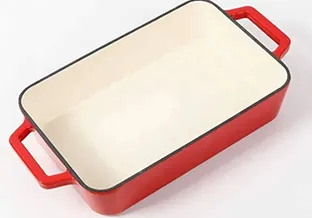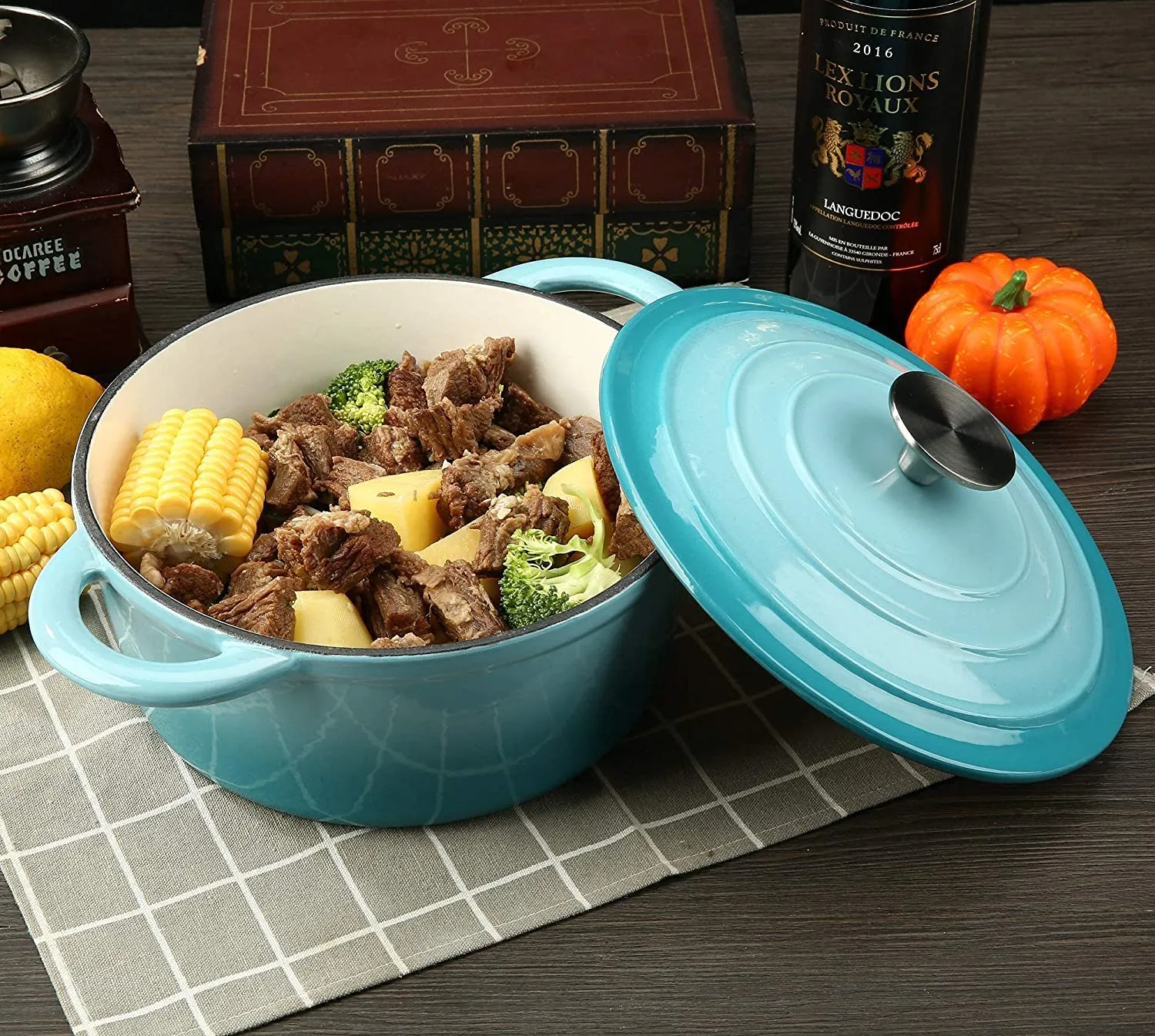
Feb . 15, 2025 21:25
Back to list
cast iron dutch oven for camping
Camping offers a unique escape into nature, and the right meal can elevate the experience from good to unforgettable. Dutch oven cooking, a timeless tradition, has become a favorite among campers for its versatility and durability. These heavy cast-iron pots can transform simple ingredients into gourmet meals. This article delves into the essentials of using a Dutch oven in camping, aiming to provide an engaging, expert, and trustworthy overview.
For those new to Dutch oven cooking, starting with simple recipes is recommended. A classic choice is a chili con carne using just ground beef, kidney beans, onions, garlic, and chili powder. Simmering these ingredients in a Dutch oven over a campfire yields a comforting stew with layers of rich flavors. Bread aficionados may attempt baking a simple loaf, involving nothing more than flour, yeast, salt, and water, resulting in a crusty bread perfect for accompanying any meal. Advanced Dutch oven enthusiasts might explore the world of desserts. The Dutch oven makes it possible to bake campfire cobbler, using canned peaches and boxed cake mix. Layer the peaches at the bottom, sprinkle the cake mix on top, and let the Dutch oven's magic transform these ingredients into a gooey delight over the campfire. When purchasing a Dutch oven, consider its size and material. A 12-inch diameter model is versatile, accommodating most recipes. While traditional cast iron is favored for its heat retention, lightweight aluminum versions are available for those with portability concerns. Opt for a model with legs on the bottom, allowing it to stand securely over coals. A good-fitting lid is essential to trap heat and cook effectively. Maintaining your Dutch oven prolongs its lifespan and ensures safe food preparation. Cleaning involves scrubbing with hot water and a brush to remove food particles. Avoid soap, as it can strip the seasoning—a natural, non-stick layer accrued over time. After cleaning, dry the oven thoroughly and apply a thin layer of oil to prevent rusting. This process not only extends the life of your Dutch oven but also enhances its cooking performance. In conclusion, Dutch oven cooking opens up a realm of culinary possibilities for campers, blending tradition with modern needs. This method of cooking requires understanding and practice, but the rewards are immense. Meals cooked in a Dutch oven over an open flame are not just about sustenance; they are about creating memories and savoring the flavors of the great outdoors.


For those new to Dutch oven cooking, starting with simple recipes is recommended. A classic choice is a chili con carne using just ground beef, kidney beans, onions, garlic, and chili powder. Simmering these ingredients in a Dutch oven over a campfire yields a comforting stew with layers of rich flavors. Bread aficionados may attempt baking a simple loaf, involving nothing more than flour, yeast, salt, and water, resulting in a crusty bread perfect for accompanying any meal. Advanced Dutch oven enthusiasts might explore the world of desserts. The Dutch oven makes it possible to bake campfire cobbler, using canned peaches and boxed cake mix. Layer the peaches at the bottom, sprinkle the cake mix on top, and let the Dutch oven's magic transform these ingredients into a gooey delight over the campfire. When purchasing a Dutch oven, consider its size and material. A 12-inch diameter model is versatile, accommodating most recipes. While traditional cast iron is favored for its heat retention, lightweight aluminum versions are available for those with portability concerns. Opt for a model with legs on the bottom, allowing it to stand securely over coals. A good-fitting lid is essential to trap heat and cook effectively. Maintaining your Dutch oven prolongs its lifespan and ensures safe food preparation. Cleaning involves scrubbing with hot water and a brush to remove food particles. Avoid soap, as it can strip the seasoning—a natural, non-stick layer accrued over time. After cleaning, dry the oven thoroughly and apply a thin layer of oil to prevent rusting. This process not only extends the life of your Dutch oven but also enhances its cooking performance. In conclusion, Dutch oven cooking opens up a realm of culinary possibilities for campers, blending tradition with modern needs. This method of cooking requires understanding and practice, but the rewards are immense. Meals cooked in a Dutch oven over an open flame are not just about sustenance; they are about creating memories and savoring the flavors of the great outdoors.
Previous:
Latest news
-
Season Cast Iron Perfectly with GPT-4 Turbo TipsNewsAug.01,2025
-
High Quality Cast Iron Cookware - Baixiang County Zhongda MachineryNewsAug.01,2025
-
Premium Cast Iron Pan: Durable & Perfect HeatNewsAug.01,2025
-
High Quality Kitchen Durable Black Round Cast Iron Cookware Pancake Crepe Pan-Baixiang County Zhongda Machinery Manufacturing Co., Ltd.NewsAug.01,2025
-
Cast Iron Cookware - Baixiang County Zhongda Machinery | Nonstick, Heat ResistanceNewsAug.01,2025
-
High Quality Kitchen Durable Black Round Cast Iron Cookware - Baixiang County Zhongda Machinery | Non-Stick, Heat Retention, DurableNewsJul.31,2025


